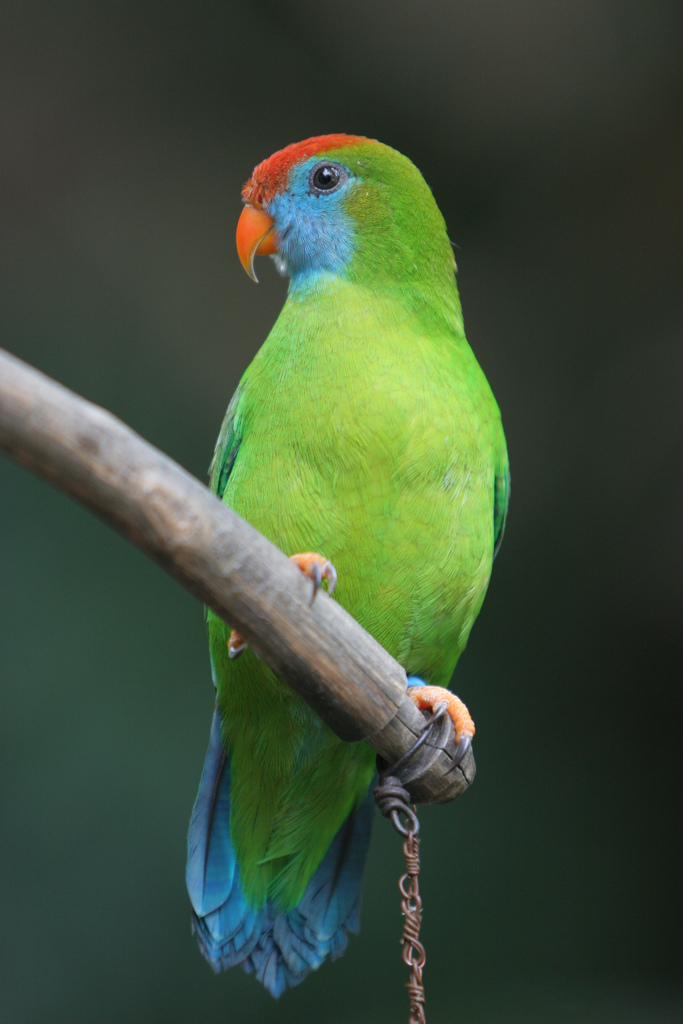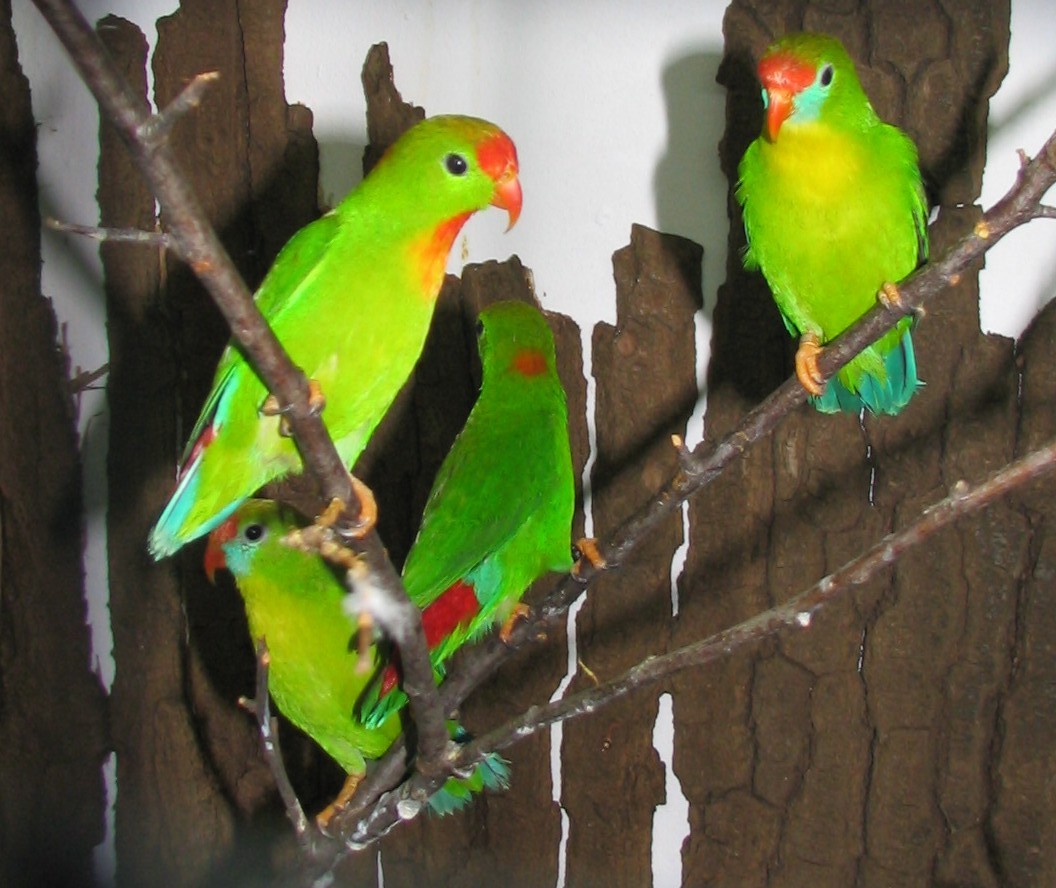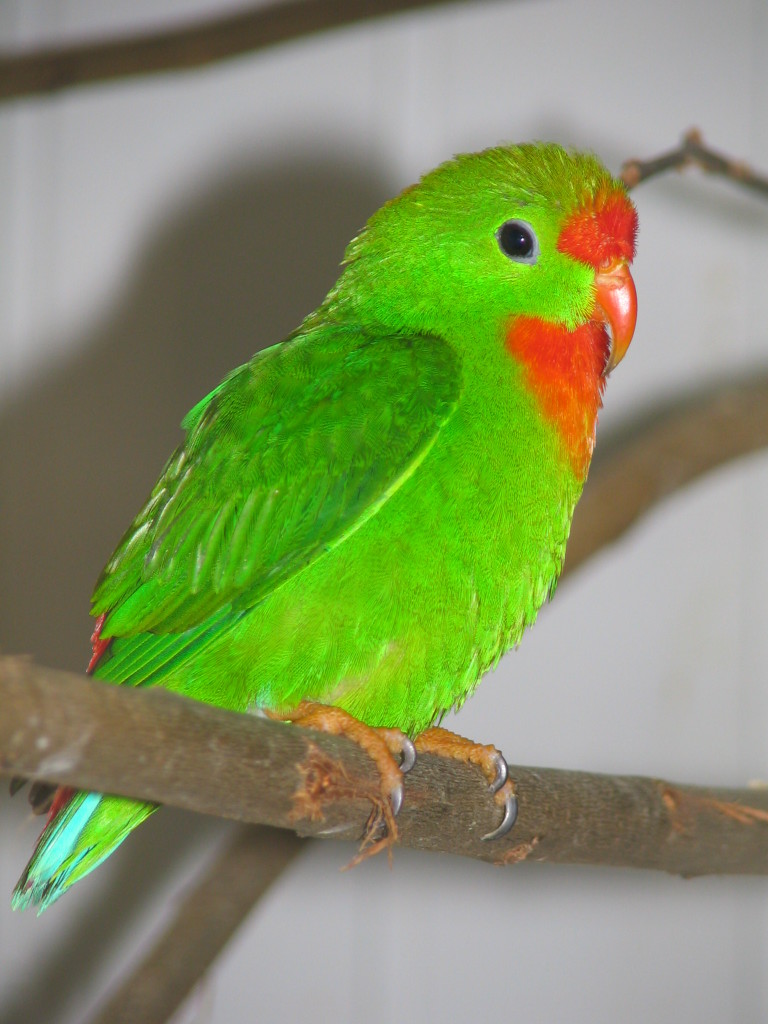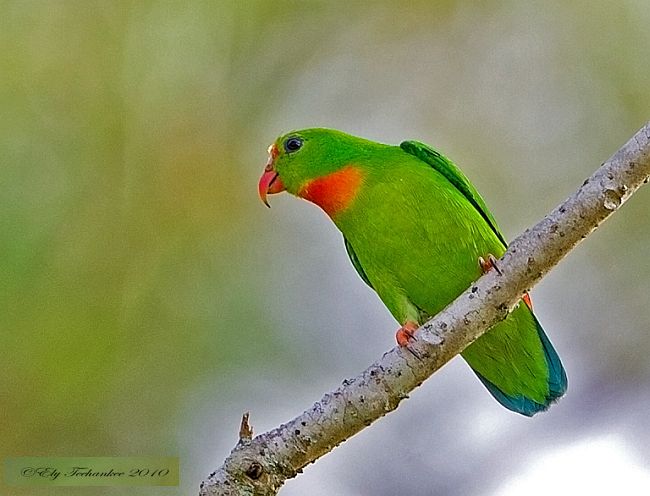
Loriculus philippensis
SUBFAMILY
Psittacinae
TAXONOMY
Psittacus philippensis P. L. S. Mьller, 1776, Luzon, Philippine
Islands. Eight subspecies.
OTHER COMMON NAMES
English: Colasisi; French: Coryllis des Philippines; German:
Philippinenpapeichen; Spanish: Loriculo Filipino.
PHYSICAL CHARACTERISTICS
5.5 in (14 cm); 1.1–1.4 oz (32–40 g). Polytypic species with geographical
variation in head patterns and colors of soft parts.
DISTRIBUTION
L. p. philippensis: Luzon and adjacent islands, Philippines. L. p.
mindorensis: Mindoro, Philippines. L. p. regulus: Tablas, Ticao,
Masbate, Panay, Guimaras, Negros, and probably Romblon,
Philippines. L. p. chrysonotus: Cebu, Philippines. L. p. siquijorensis:
Siquijor, Philippines. L. p. apicalis: Mindanao and adjacent
islands, Philippines. L. p. dohertyi: Basilan, Philippines. L. p.
bonapartei: Sulu Archipelago, Philippines.
HABITAT
Lowlands and foothills. Primarily lowland forest, but occurs in
most wooded habitats, including secondary growth, high bushes,
plantations, orchards, and remnant woodlots in cultivation.
BEHAVIOR
Resident; local wandering for food. Singly, in pairs, or infrequently
in small flocks feeding in middle-to-upper stages of
forest or in flowering bushes; difficult to detect amidst foliage,
but constant calling betrays presence; associates with other
fruit-eating birds in mixed foraging assemblages; shy when disturbed
in forest, but bold when feeding in flowering coconut
palms; swift flight characteristically undulating.
FEEDING ECOLOGY AND DIET
Fine, protruding bill and “brush-tipped” tongue used to gather
nectar and pollen from flowers; also feeds on soft fruits and
seeds; takes fermenting coconut nectar harvested by villagers,
sometimes becoming intoxicated.
REPRODUCTIVE BIOLOGY
Little known; breeding recorded March–May; nest in hole in
dead tree at 39 ft (12 m) height. In captivity, clutch of three
eggs incubated by female for 20 days; chicks left nest approximately
five weeks after hatching.
CONSERVATION STATUS
Common throughout parts of range, but four subspecies (mindorensis,
bournsi, regulus, and dohertyi), with combined population
estimated in 1990s at probably less than 5,000, threatened
by deforestation and capture for live-bird market; another two
subspecies (chrysonotus and siquijorensis) almost extinct because
of habitat loss. Listed on CITES Appendix II.
SIGNIFICANCE TO HUMANS
Very popular cagebird; commonly traded between islands.
Other popular Animals
Photo Gallery of - Philippine hanging parrot




 Animalia Life
Animalia Life